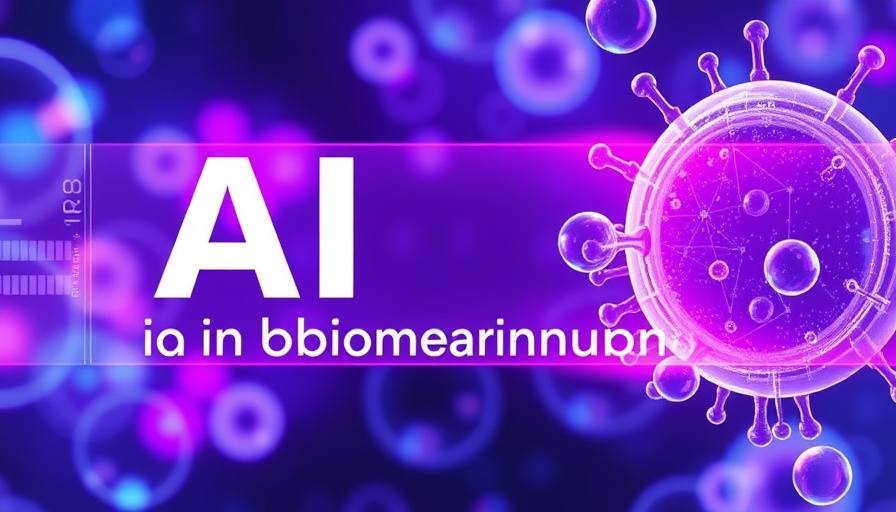
A New Dawn for Biopharma: Harnessing AI Innovation
As the biopharmaceutical industry evolves, the integration of artificial intelligence (AI) is proving to be a game-changer. With a staggering median cost of $708 million to develop a new drug, and an escalation to $1.3 billion when accounting for failures, companies are urgently looking for methods to streamline processes and enhance returns on investment (ROI). This challenge is compounded by the potential for AI automation to transform the drug discovery landscape dramatically.
Unlocking Potential: The AI Impact on Drug Discovery
According to the OECD, AI can significantly accelerate early-stage drug discovery, with AI-guided lab robots conducting as many as 100,000 experiments annually. This kind of efficiency allows biopharma organizations to reduce the traditional five-year timeline for drug development to just weeks, demonstrating the profound implications AI holds for the industry. McKinsey & Company estimates that by utilizing generative AI, the economic impact across pharmaceutical research and development could reach up to $110 billion annually. However, the successful implementation of these technologies remains a hurdle that many biopharma firms struggle to overcome.
The Disconnect: Executive Tourism in AI Adoption
One of the primary barriers to effective AI adoption in biopharma is not rooted in technology, but rather the organizational culture surrounding it. Nishtha Jain, Director of Digital Strategy at Takeda Pharmaceuticals, refers to a phenomenon she calls 'executive tourism,' where leaders pursue advanced AI solutions without a comprehensive understanding of their own operational requirements. This disconnect results in technology being implemented for its novelty, rather than its strategic fit, often leading to low returns and stalled innovation.
Framework for Success: The 'Three Ps' Approach
To effectively bridge the gap between aspiration and reality in AI deployment, Jain recommends utilizing the 'Three Ps' framework: prediction, personalization, and productivity. By aligning AI initiatives with these core objectives, biopharma leaders can identify immediate opportunities for ROI and streamline the integration of AI into their workflows.
Real-World Applications: Learning from Industry Leaders
In the bustling realm of pharmaceutical innovation, organizations leveraging AI to its fullest potential not only enhance their operational capabilities but also improve patient outcomes. By adopting the lessons shared by Jain in her discussions on the AI in Business podcast, leaders can recalibrate their strategies to focus on impactful, user-centered deployments. This reorientation not only aligns with regulatory mandates but enhances the overall value derived from investment in AI technologies.
Moving Forward: The Future of Biopharma and AI
As the landscape of drug development continues to shift under the influence of digital technologies, biopharma leaders must prioritize strategic alignment with AI innovations. By investing in a thorough understanding of their processes and the specific needs of their organizations, they can harness the true power of AI, setting the stage for revolutionary advancements in healthcare.
As the dialogue surrounding AI in biopharma progresses, exploring the insights shared by industry pioneers like Nishtha Jain can pave the way for actionable strategies that resonate deeply within the fabric of biopharmaceutical innovation. The future is bright, where companies that first embrace AI's advantages not only enhance their bottom lines but also lead the charge in redefining patient care.
If you’re a business owner in the life sciences field, now is the time to explore how AI can transform your operations. Consider engaging with AI strategies that emphasize user-centered design and functionality to ensure your investments yield tangible results and align with broader organizational goals.
 Add Row
Add Row  Add
Add 





Write A Comment